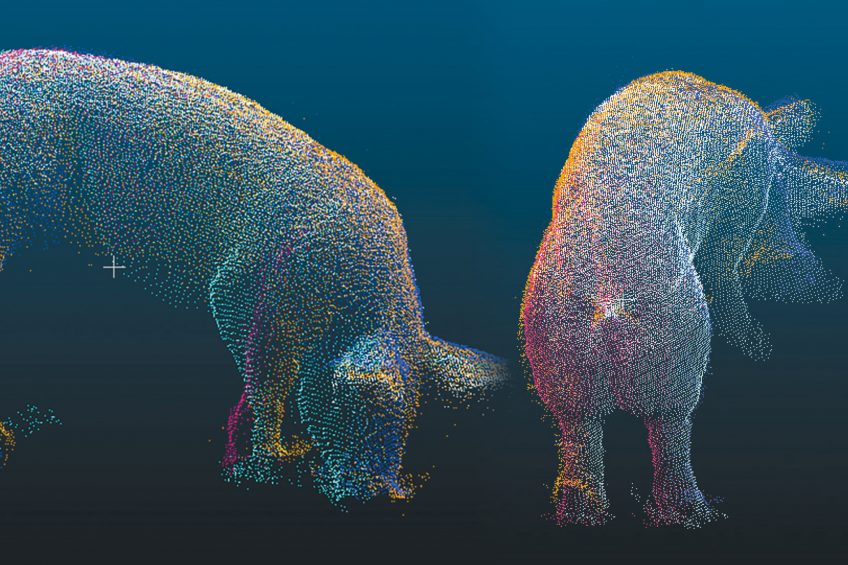3D weighing in finishers: Fiction or reality?

Even the entertainment industry can leave its mark on swine production. French researchers are working to replace old-fashioned weighing cages by a 3D reconstruction devices.
That was explained by Yvonnick Rousselière from the French Pig and Pork Institute (IFIP), in the September-October issue of TechPorc, the magazine co-edited by IFIP and the Chambers of Agriculture of Bretagne.
Why a 3D-weighing system?
The goal of the experiment is to replace the often delicate weighing cage, which can be used routinely with a solution that is more practical, less expensive and just as accurate.
In managing a farm, animal weight is an important indicator for both performance monitoring and day-to-day work. Despite its importance, pig farmers hardly do this monitoring for various reasons: investment, lack of time, handling of animals. The 3D weighing should help to remove these constraints to make the practice of weighing pigs widely available.
How does 3D-weighing work?
For the moment, only a prototype has been developed at the experimental IFIP station in Romillé, France, in partnership with Advansee, a company specialised in image analysis and embedded electronics. The device consists of a gantry positioned in the corridor of a livestock building (3 m long, 1.80 m wide and 1.80 m high), 5 ‘Kinect’ cameras positioned at the same level, 1 in the centre and 4 in each of the corners of the portico.
The central camera will trigger a simultaneous photograph of the 5 cameras at the best moment, allowing a complete view of the animal. Kinect cameras can make up to 30 snapshots per second and produce depth maps from each shot. These data are sent and sorted by the microcontroller, which will reconstruct the animal’s volume. This again will be converted to the animal’s weight.
Precision of 3-D weighing
To become operational, the error margin for weight measurement should be below 5%. This step is currently being validated. To do this, the research team will send 50 pigs (10-110 kg) through an RX tomograph, to measure the reference volume of the animal, and subsequently sent them to the 3D weighbridge.
Its goal is to construct an algorithm on the micro-controller, to reduce the gap between the measurement of the exact volume obtained from the scanner and the volume estimation as measured by the gantry. After validation, it will be possible to find the exact animal weight.
Timeline of the project
The project, currently underway and ending early 2018, aims to develop a first device as a proof of concept. Gantry optimisation work aims to reduce the number of cameras without altering the accuracy of the measurement. One option is to settle for 3 aligned cameras, which would make the gantry easier to transport. In addition, it would be possible to reduce the microcontroller’s power, to reduce costs. Once optimised, the portal has to be integrated in a more global device.

Sorting animals for slaughter
For example, when a farmer has to sort his animals for finishing and send them to the slaughterhouse, he will be able to pass the animals one by one into the gantry. At its exit, a sorting gate will open to either send the animals to a departure pen if the animal weighs more than desired, or bring the animal to his initial place if its weight is considered insufficient.
Similarly, if all animals are identified individually by RFID chips, the breeder can follow the weight gain of his animals by passing them regularly in the gantry. The microcontroller can then archive the weights of each animal and produce growth curves.
Mr Rousselière said, “With the rise of new technologies, it seems reasonable to achieve a tool for breeders in the short term, between 2 to 5 years.”











